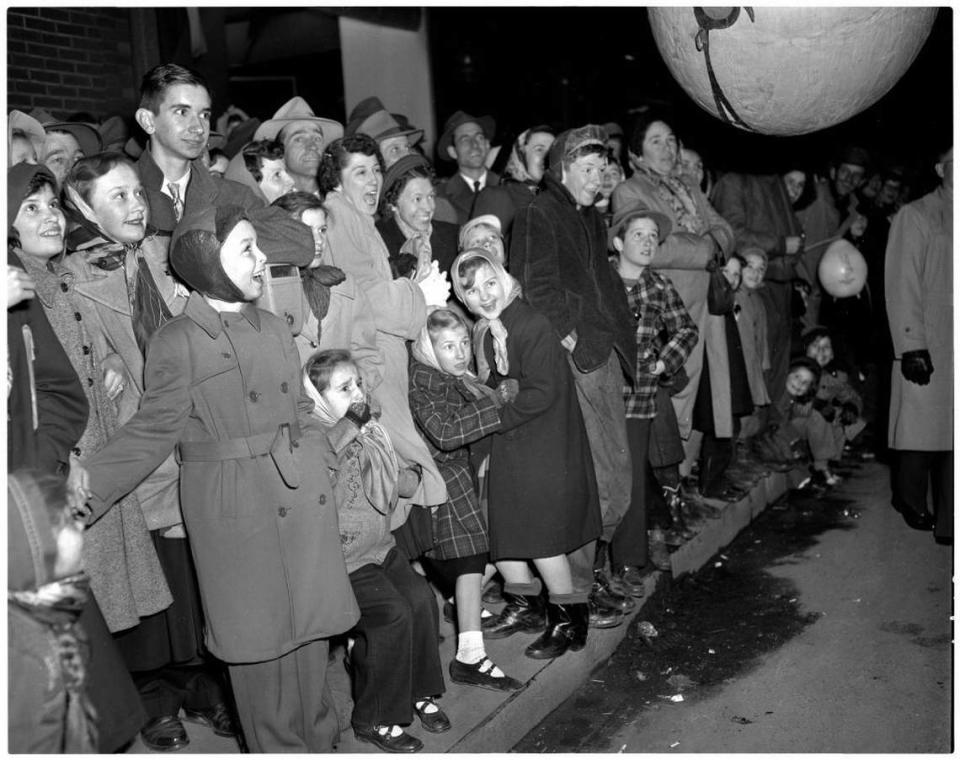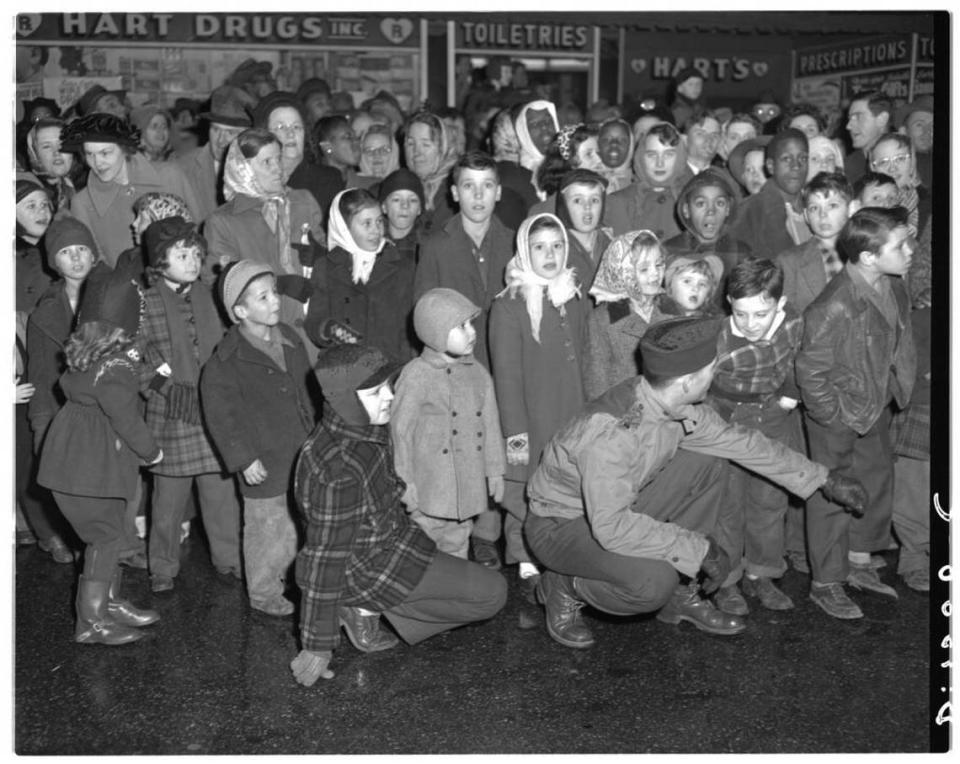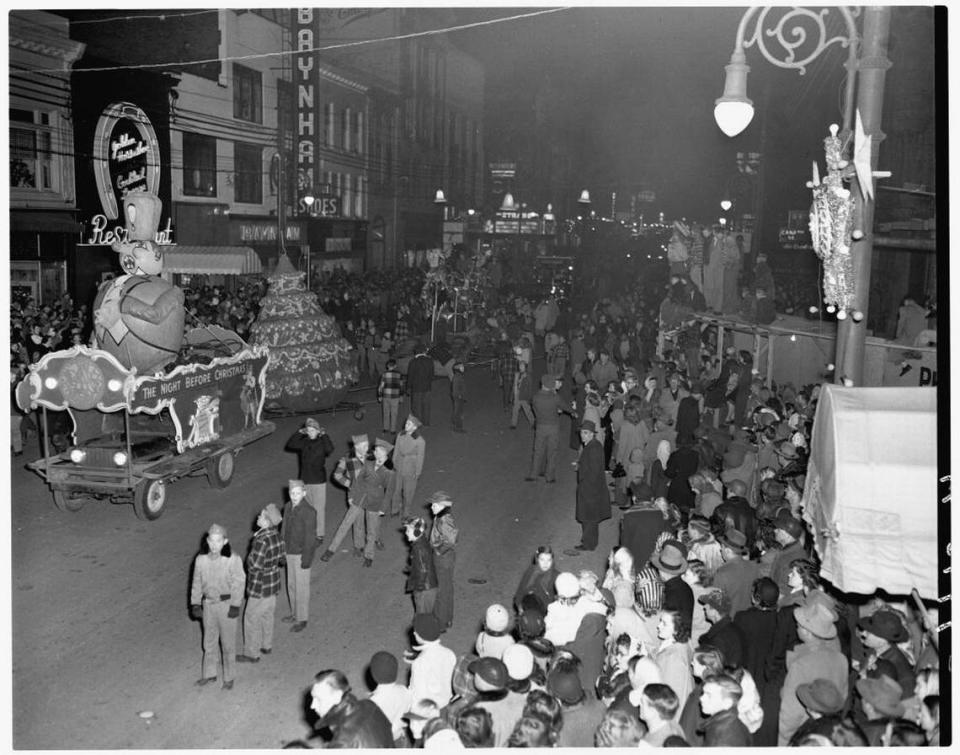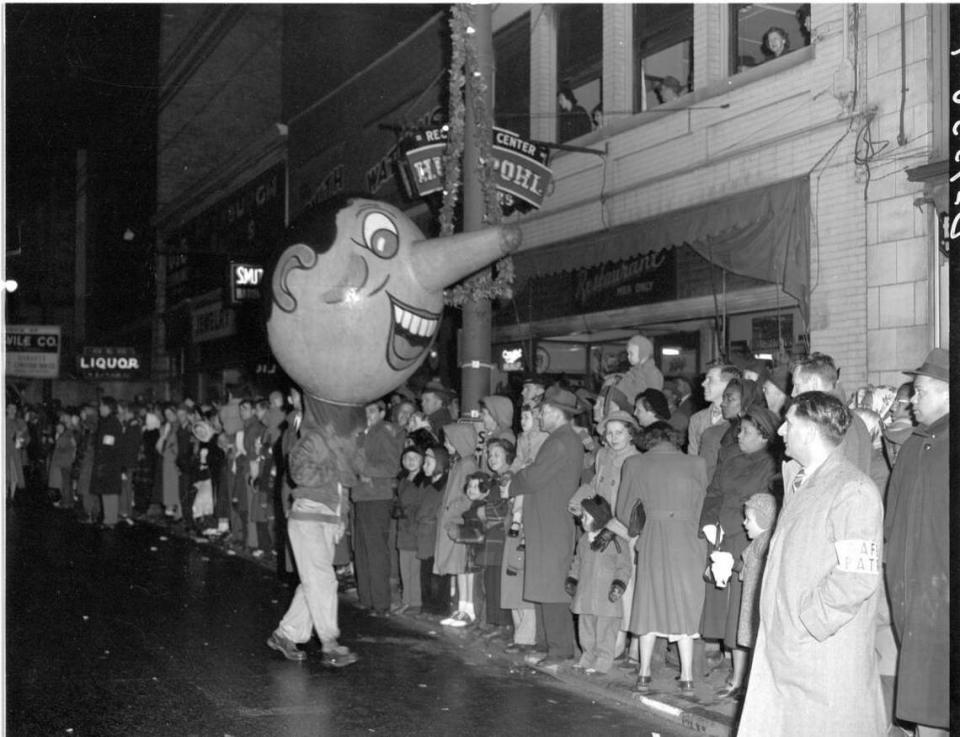Christmas parades were once a big deal in Lexington. Ask the 100,000 who were there.
Lexington’s annual Christmas parade is this weekend, and though it’s hard to imagine, Lexington has seen some Christmas parades with crowds estimated at four times larger than Rupp Arena at capacity.
In 1949 and 1950, the city’s parades featured giant balloons, some of which required as many as 50 handlers, and drew crowds that the police estimated at 100,000 people, or nearly twice the city’s population at the time.

“Windows of practically every building along the parade route — from Midland along Main street to Broadway, to Second and thence to Pleasant Stone street — were filled with onlookers, who with their fellow spectators represented virtually every town in Central and Eastern Kentucky,” the Lexington Herald reported after the 1949 parade.
“A throng, 50 feet deep at the Union Station viaduct, cried ‘Merry Christmas’ in response to a similar greeting as a balloon organ and carolers moved along. Further down the street, a mass of humanity caught up the strains of ‘White Christmas.’”

The next year was just as big.
“Everywhere that people could stand, they stood — in store windows, on top of cans and boxes, on office chairs, on top of buildings, and even on the jutting edges of some structures,” the Herald reported after the 1950 parade. “Perhaps the most popular place for young boys was atop the wooden passageways built around buildings under construction. And perhaps they had the best time of all for they were uninhibited by the presence of adults.”
Both years, the oversized balloons were brought in by Jean Gros, a Pittsburgh businessman who took balloons on the road for parades throughout the country.
A 1951 Popular Mechanics article explained how Gros, inspired by European mummers’ parades and the Macy’s parades in New York, designed rubberized fabric balloons that were low enough to fit under the overhead wires in many cities and could be inflated with air rather than helium.

Drawing more shoppers to downtown was most certainly at the heart of the effort, which was paid for by the retail committee of the Lexington Board of Commerce.
The city’s police force, as well as “safety patrolmen” from downtown provided crowd control, and state police were enlisted “to patrol all highways leading into Lexington,” the Lexington Herald reported.

Locals were urged to leave their cars at home because of the increased traffic.
The first year’s balloons, which were carried by Boy Scouts and Junior Chamber of Commerce members wearing clown costumes, included a giant dragon, animals and “a balloon totem pole and Indian with tepee,” among others.
The next year, four giant book floats representing the poem “Twas the Night Before Christmas” were billed as “the first attempt anyone has made to tell a story with balloons.”

The Herald-Leader called it an “$85,000 spectacle” that featured a 40-foot candy cane, racecar, cowboy, Humpty Dumpty and Raggedy Ann.
There were also local parade entries.
Marching bands from the University of Kentucky, Georgetown, Winchester, Frankfort, Harrodsburg, Mount Sterling, and Lafayette, Henry Clay and Dunbar high schools participated the first year, as did 100 Boy Scouts “in a massed color guard of American flags” and the “Confederate squad of the university’s Pershing Rifles.”
The 1949 parade also included another unusual entry.
“Two deer, slain on a hunting trip in Pennsylvania this week … were strapped to the front of a car in the parade and caused a murmur in the crowd,” the Herald reported.
But one thing hasn’t changed.
Even with ginormous balloons and hundreds of marching musicians, Santa was the parade’s big draw back then too.
The 1949 coverage described children dancing in the streets and people running after and even climbing onto the float carrying Santa.
“Adults were unrestrained and shouted and waved along with the children. They, too, wanted to be remembered,” the Lexington Herald article stated. “And then he had passed them. The crowd seemed to sag as he went by. Then it came to life again and broke out into the street behind his float. Another band was following him but the crowd paid little attention. All eyes still were on Santa Claus.”

Note: This article was first published in December 2017.

 Yahoo Movies
Yahoo Movies 
